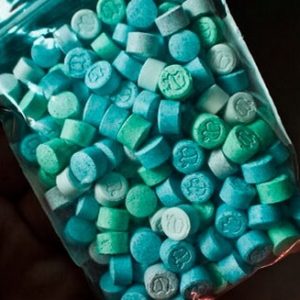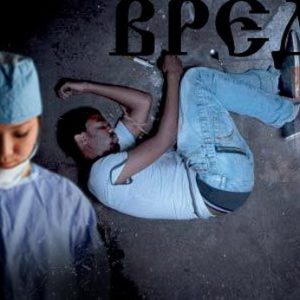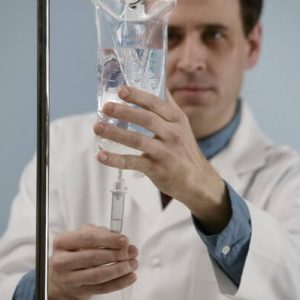Amphetamines are chemical compounds among which is the amphetamine and similar derivatives of the substance – methamphetamine, cathinone, ephedrine, MDA, Ecstasy, DOB and others.
They all have a psychoactive effect with pronounced narcotic effects. Some of these substances have found application in medicine in the treatment of mental disorders. With prolonged use addictive.
An integral part of amphetamine has been known since antiquity. Ephedra is used in Chinese medicine. The leaves of khat were used by the African peoples as a reducing agent after serious illnesses.
The amphetamine – 1887. German scholar of Romanian origin. Edeleanu identified in the course of chemical experiments. Psychoactive effect of the compound drew the attention of the American biochemist G. Alles. Amphetamine salts have been used in medical practice in the treatment of depression, Parkinson’s disease, to reduce body weight.
The stimulating effect of amphetamines began to be used in the armies of Germany, Japan, USA. Especially during the Second world war.
The peak of popularity came in the 60s, with the beginning of mass production of designer amphetamines.
The production of these psychoactive substances emerged at the mass level, it was then doctors noticed the development of drug addiction. Subsequently, the production and consumption of these drugs began to wane, being replaced by others, but has not lost relevance in our days, especially in Europe.

Please note: in the 90-ies of the last century, the most popular amphetamine stimulant was Ecstasy, under the form which is often consumed substitutes have become a popular tool in various youth meetings.
How are amphetamines, intake forms, doses
The psychoactive effects of this group of psychoactive substances because they cause accumulation in the synaptic gaps of the nerve fiber (pulse transmission) of a large number of catecholamines (neurotransmitters – transmitters of signals). In particular – dopamine, serotonin and norepinephrine. This process is very complex.
In the end, a person taking amphetamines develop:
- psychoactive effect;
- the hallucinogenic effect;
- emetogenna symptoms.
This triad is the complex drug of the patient expectations.
Addicts used amphetamines in powder form, tablets with logos, capsules, syrups. The solution was injected into a vein. Crystalline forms are prepared Smoking blends “ice.” Often they are given orally (through the mouth) or by using a suction effect via the nasal mucosa (intranasal route).
Dose of pure amphetamine is from 5mg to 20 mg. the Effect lasts for about 4-6 hours, maximum 24 hours.
How do human cause amphetamines
The reception of an amphetamine addicted people has a number of features. The desire to experience the familiar sensation makes drug use a cyclic way. The first dose gives strong, but short-term effect. Usually no more than a few minutes. As soon as feelings go, addict adopts the following “portion“. The need for new dose causes the patient to repeat the techniques every hour (sometimes 3-4 hours). The cycle continues for 2-3 days. After full repletion, the patient begins to exit the loop. The final period lasts about 10 hours.

Please note: the anesthesia ends with a long and deep sleep during the day, and sometimes more.
Injected into a vein amphetamine-type stimulant gives the effect of a few seconds. Other ways of reception cause narcotic effects in a few minutes. The application inside requires higher doses. In the liver a drug breaks down and is excreted by the kidneys within a few days.
On the background of the use of drugs the patient developed:
- the increased attention and concentration abilities;
- improved mood;
- improve memory and accelerate mental processes;
- go of doubt and embarrassment, their place is taken by confidence and feeling of inner comfort;
- movements are gaining sharpness, speed and accuracy;
- it is fast, clear.
This drew the attention (in the background of the use of high doses) the development of external anxiety, lack of need for sleep. May develop a fine tremor in the limbs and body. When individual sensitivity sometimes panic and psychosis. Phenomena of overdose can simulate the clinic of schizophrenic disorders. Some patients develop a stereotypical looping on re-actions that can occur more than one hour.
Excessive tension of the sympathetic division of the nervous system cause the consumers of amphetamines:
- increased heart beats – tachycardia;
- jumps in blood pressure, sometimes to dangerously high values.
- a sharp increase in the size of the pupil – mydriasis;
- raising body temperature while the patient is severely cold;
- drying of the mucous membranes of the mouth, nose, throat.
Signs and symptoms of an overdose of amphetamines

Effect of large doses is a increased risk for the heart. The patient develops pronounced heartbeat, the spasm of the arteries. On this background of sharply increased blood pressure. If the process affects the coronary (intracardiac) blood vessels, can develop stenokardicheskie pain, and malnutrition of the heart muscle sometimes leads to myocardial infarction.
The process of narrowing of the arteries in the brain can trigger ischemic stroke, hemorrhage.
Amphetamines in the blood in excessive quantities, often stimulate the development of metabolic acidosis (condition in which blood accumulates poisons – non-volatile acids, ketone bodies, etc.). Often occurs acute renal failure, bleeding disorders.
Important: amphetamines have a neurotoxic action, causing damage to brain cells.
The development of dependence on amphetamine
Systemic administration of amphetamine gradually shapes the development of mental view the tempand. With each new “portion” of the desire to take a narcotic drug becomes more acute. In most cases, a mental kind of traction develops after 2-3 weeks of daily consumption of amphetamine-type stimulants.
Self-denial (without treatment) causes an irresistible craving to go back to the usual dose. This condition, if not to provide patient assistance, can continue for several weeks. Then the dependence is retreating. But the risk of relapse (return of desire anesthesia) will persist for years.
Among medical scientists are still ongoing scientific debate about the presence or absence of amphetamine-type physical dependence. Clearly all the experts came to the conclusion that in patients who start taking amphetamines, formed the syndrome. It appears like drug addicts, long-term use drugs and those who use them for a short period of time.
The syndrome is manifested:
- cumulative fatigue for no apparent reason;
- drowsiness in the daytime;
- depression;
- the feeling of hunger (due to compensatory reaction of the organism to the limit of food during the consumption of amphetamines).
It is proved that amphetamine-type stimulants, has a strong hallucinatory effect, does not cause dependence.
Long-term use of amphetamines leads to the fact that patients lose weight quickly. They look dull, gray, haggard. Skin pale gray. Face with sharp features, sunken cheeks.
The drug destroys the immune system. As a result, patients having frequent infectious disease and relapses. At the acute symptoms superimposed chronic pathology. A person gradually loses the physical and mental health. May be reduced hearing and impaired vision.
Please note: a large dose can cause specific amphetamine psychosis.
Its peculiarity is the preservation of clear consciousness. Psychosis is manifested by irritability, increasing anxiety and fear. The patient is tense, he occasionally there are bouts of delusional disorders and hallucinations. Especially often develop tactile disorder (delusional parasitosis). The patient feels crawling on body, insects and other parasites. In this case, it is necessary to spend distinctive diagnosis of acute phase of schizophrenia.
Treatment of dependence on amphetamine

Treatment is necessary in case of drug poisoning (overdose) and to get rid of addiction.
Toxicity is removed or in Toxicological intensive care units of hospitals, it is desirable drug, or psychiatric profiles. If necessary, the patient must be fixed. This need arises in cases of restless behavior of the patient, with the possibility of harm to themselves and others. Intensive therapy includes a massive detoxification using isotonic solution, glucose (as a solvent). Neutralizing drugs and metabolic products, the action has Reosorbilact. If you want detoxification to protect the liver and heart, especially recommended intravenous drip of Reamberin.
The phenomena of psychic excitation is removed benzodiazepine tranquilizers (diazepam). When seizure of alertness apply magnesia, barbiturates, propofol.
In more serious cases when hallucinations are neuroleptics (droperidol, haloperidol, and others).
In severe hyperthermia (high temperature) the patient should be rapidly cooling. For this purpose, wet wraps, hot water bottles and other containers with cold water, which draped the patient.
Essential medicines will normalize the blood pressure. When arrhythmia is selected the required anti-arrhythmic complex.
The state of patient with active detoxification and antipsychotic treatment normalizes very quickly. Sometimes for a few hours.
Removing dependence on amphetamines is carried out in drug treatment clinics.
If needed (larger doses and prolonged anesthesia) patients recommended detoxification.

Drug cancel simultaneously. The development of a marked withdrawal syndrome facilitate tranquilizers and antipsychotics.
As in case of overdose, is assigned pathogenetic and symptomatic therapy (recovery and normalization of the heart, brain, liver).
Please note: the basis for the treatment of amphetamine addiction is psychotherapy. This type of assistance is from the first day of admission of the patient to the clinic.
It is very important to achieve motivation of the patient to recovery. Not all feel sick. The task of explaining the essence of problems are solved by psychiatrists in collaboration with psychologists. After convincing the patient that he has a disease, go to the second motivational stage, the mood of the patient for a healthy life.
Methods used for psychotherapy of individuals with amphetamine abuse:
- suggestion and reality in a hypnotic sleep. Applied both individually and in group;
- the belief in group therapy sessions;
- treatment by stimulation of aesthetic senses (skillful application of the method allows to achieve very good results with the help of literature, music, painting). Patients at these sessions is open to new meanings of life, set goals.
At the end of the treatment very well, if the doctor and patient come to a consensus about the need for encoding. In the case of the treatment of the abuse of amphetamines, the most suitable coding method Dovzhenko.
Leaving the hospital it is not a complete guarantee that the survivors will not have a recurrence (return dependencies). Therefore, to consolidate the effect of treatment is better in rehab.
Proper treatment allows to achieve good remissions (periods of sobriety), and a positive forecast.




Hi to all, it’s actually a fastidious for me to visit this web site, it consists of important Information.